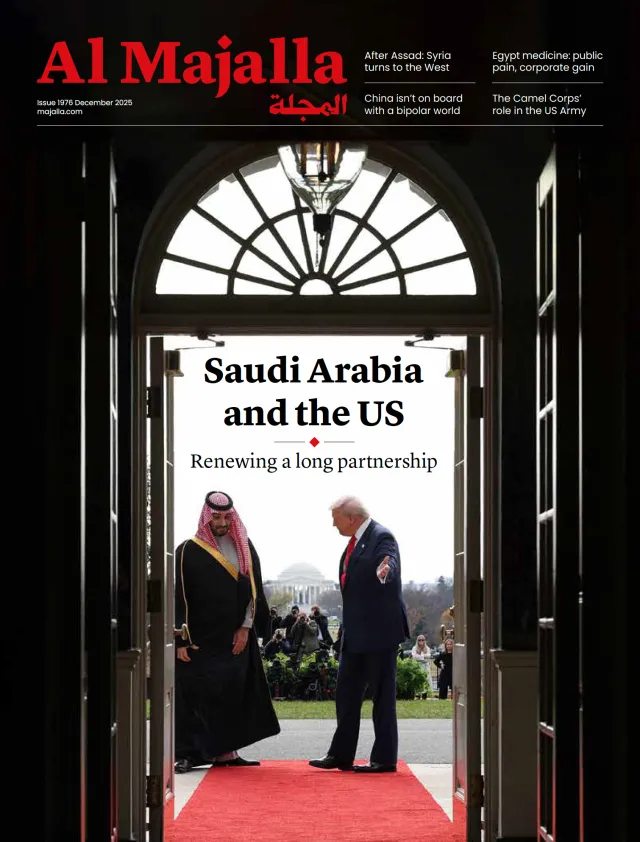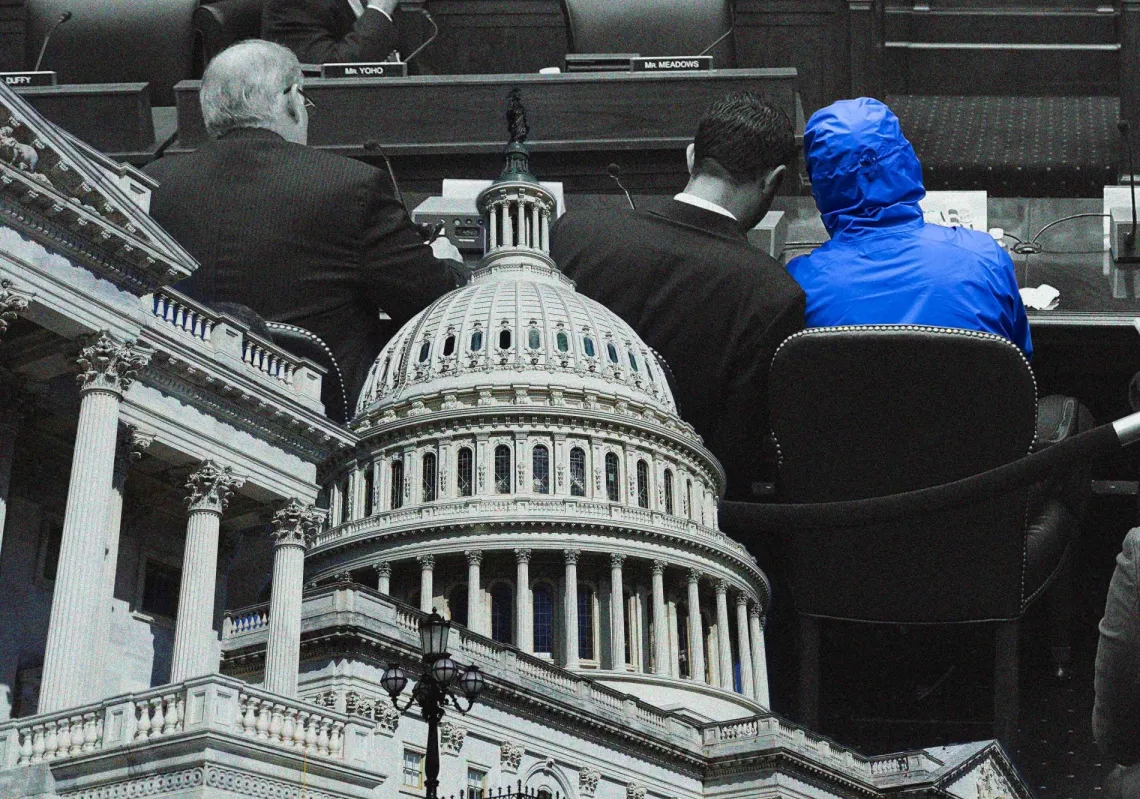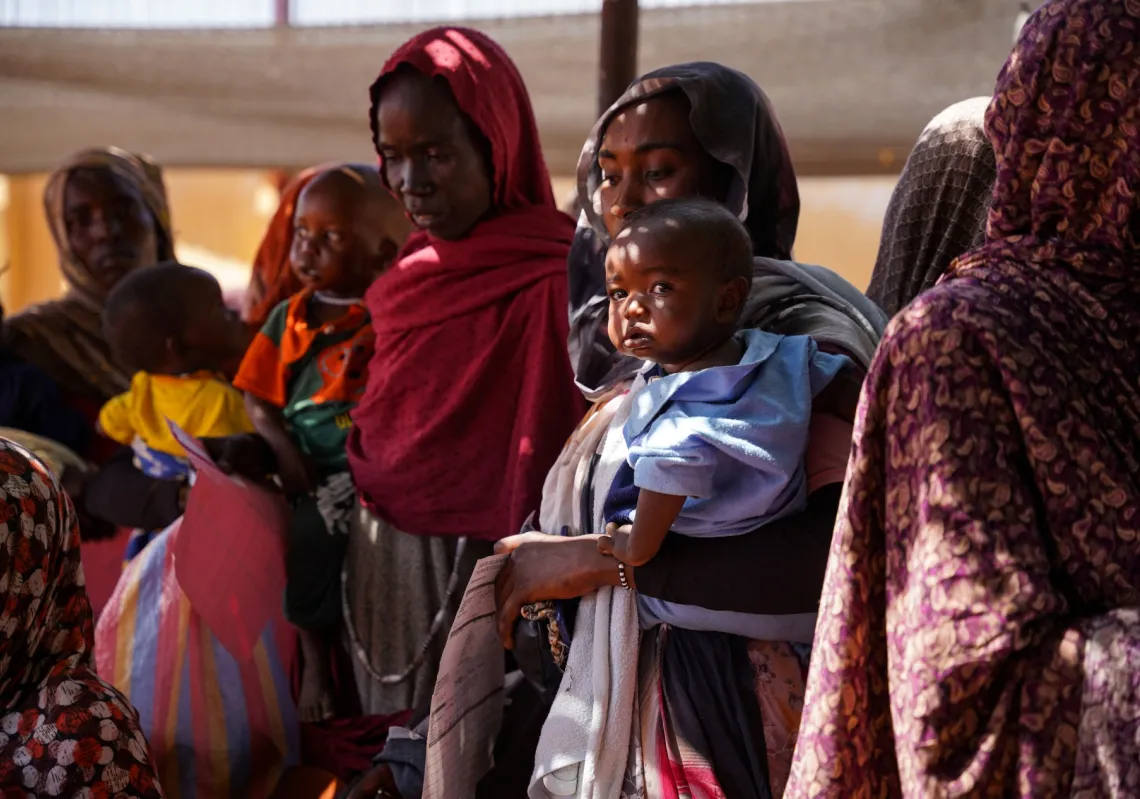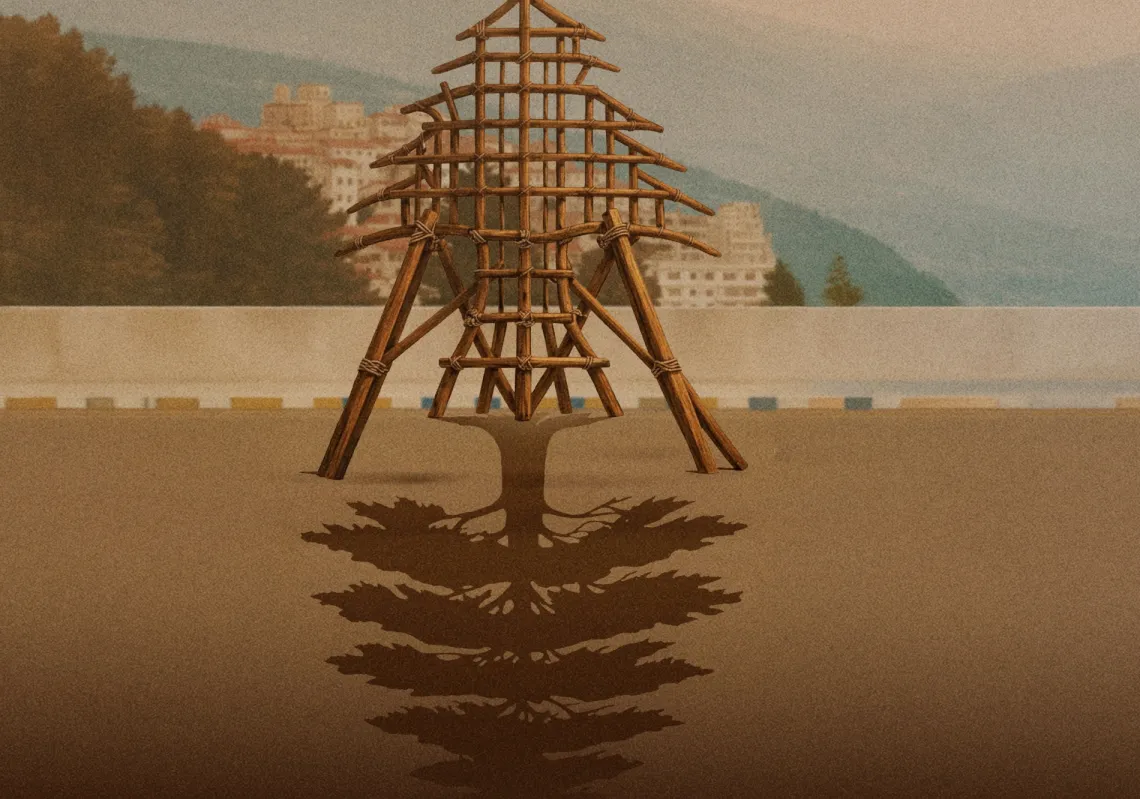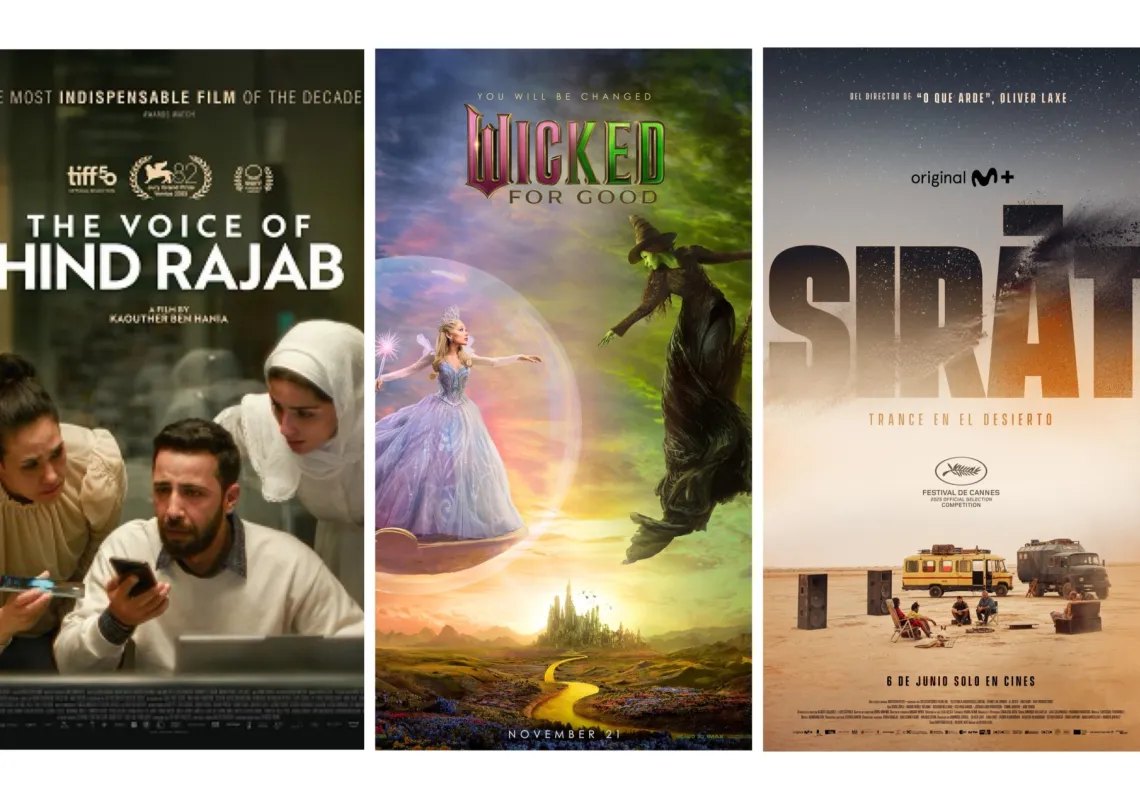Hundreds of millions tuned in to watch the funeral of Pope Francis at the Vatican on 26 April, bringing much of the world to a standstill, as the grandeur of the spectacle—and the glittering array of world leaders in attendance—underlined that the power of the papal office has not diminished over the years.
It is interesting that cinema has depicted the figure of the Pope as the embodiment of a vast network of authorities, interests, and calculations—the centre of an intricate web, combining the sacred, the symbolic, the political, the social, and the personal.
Films have also explored the Pope’s influence on events, and how the papacy has variously fallen prey to corruption, collaborated with the mafia, stayed silent on major crimes, and concealed abuses at the very heart of the Roman Catholic Church. The intrigue comes from the history, power, and personification of the office.
Balancing act
The Pope represents exalted, sacred structures, but remains deeply enmeshed in the realities of the world, so each Pope must bring their experiences of these realities to renew the papacy, which cannot become fossilised. This ongoing renewal is important.
As the Church engages with issues such as politics, technology, identity, and language, it can mean discerning what remains vital from what has outlived its relevance, while maintaining a coherent doctrinal framework rooted in a sacred and unified narrative. As we enter an era of fragmentation and discord, that is increasingly vital. It can be a balancing act, and not all decisions prove to be wise.
Cinema has chronicled the crises, stumbles, glories, and moral lapses of the papacy, while analysing its nature and conflicts. A common thread running through many of the films that have explored this deeply paradoxical world figure is the influence of the world in shaping the Pope’s personality and the structure of the papal institution.
The papacy is considered a direct line of succession back to St. Peter, the apostle, so in a sense it is a 2,000-year-old institution, yet the rapidly changing modern world has meant that the office and authority of the Pope has needed more than just cosmetic adjustments. Rather, it has required a profound reconstruction of doctrine itself.
Increasingly, the head of the Church has had to articulate clear, decisive positions on a range of thorny and complex issues. A Pope is elected based on his views on these issues, and their legacies are defined by them. Here is a look at some of the films that tackle these themes, beginning with one of the most recent.
Conclave (2024)
Edward Berger's Conclave centres on the secretive process of electing a new Pope after the death of his predecessor, with fierce competition between the Church's reformists and its more conservative defenders of tradition.
A leading figure for the traditionalists is Cardinal Tedesco of Italy. He favours an unwavering adherence to foundational principles and rejects reform. In the reformists' corner is Cardinal Bellini, a liberal American cleric who advocates for an open and tolerant Church.
These are two clashing visions, reflecting a profound ontological divide—two irreconcilable worlds that cannot coexist beneath the same heavens. As each side clings to its positions, the film exposes how even the most hallowed fundamentals can be reinterpreted and reframed through networks of interests and biases that reflect not divine mandates but more earthly power structures.
The traditionalists brandish their steadfastness and champion the preservation of ecclesiastical order and the world it represents. To them, the election of a new Pope is not a search for new experience or broader horizons.
Rather, it is a reaffirmation of the Church's predetermined trajectory that tolerates neither rupture nor innovation. Even animosity towards other faiths being rationalised, as traditionalists seek a new Pope not of his time, but of the past, an executor of judgments—not a maker of them.
For the reform-minded, doctrine is no static monolith but a living body subject to constant review and re-evaluation in response to cultural and social transformations. The past, while worthy of study, must be understood in its own time. Doctrine must not be absolutist but rather open itself to the realities of justice, human rights, and the evolving needs and hopes of humanity, they say.
Berger's film transcends this binary struggle, propelling the narrative into even more audacious terrain, including with an intersex cardinal (someone with both male and female characteristics) who emerges to herald a radical vision of openness, peace, freedom, and love.
In this way, the film confronts an immutable papal edict: that the Pope must be male, raising questions about gender identity and the Church's need for female voices for renewal that is not only desirable but necessary.
The Two Popes (2019)
Directed by Fernando Meirelles and written by Anthony McCarten, The Two Popes presents the traditionalist-reformist conflict through an imagined dialogue between Pope Benedict XVI and Pope Francis, who at the time was Cardinal Bergoglio.
Pope Benedict clings to theological and ecclesiastical orthodoxy, seeing 'renewal' as a threat to the central identity of Catholicism. "Change for the sake of change is not a virtue, but a betrayal," he says. Bergoglio, by contrast, rejects the complexity of ecclesiastical rituals, seeking to simplify them and bring the Church closer to the people. "The Church must be close to the people, not live in its own ivory towers," he says.
The film explores these contradictions through intense dialogue, with each character presenting their views on matters such as transparency, clerical celibacy, and the Church's role in the modern world. Benedict defends what is known and defined, arguing that change represents a destruction of faith by subjecting it to doubt and questioning.
Bergoglio views immutability as both a theological and a practical illusion, arguing that maintaining it only harms people's relationship with the Church and drives them away, because it fails to adapt to new ways of living and thinking. These changes require the Church to modify its logic and methods to keep pace and remain relevant. For one man, it is the people who serve the Church. For the other, it is the Church that should serve the people.
Habemus Papam: We Have a Pope (2011)
In his film Habemus Papam, director Nanni Moretti explores the inner conflict of Cardinal Melville, who is elected to the papacy but finds himself trapped between the limits of his own nature, his self-perception and sense of personal capability, and the demands and expectations of the institution.
The film centres on the Pope's psychological collapse under these pressures, focusing on the discrepancy between how he perceives himself and how he is expected to embody the role of pontiff, one that requires the complete dissolution of personal traits in favour of the office. In desperation, the Church turns to a psychologist for help.The film powerfully highlights the influences of the outside world on the title holder and the boundaries of the office, touching on both personal and institutional limits. It culminates in a form of protest against the rigid frameworks that the papal role demands. The declaration of incapacity to fulfil these demands acts as a brilliant defence of the concept of renewal.
The Shoes of the Fisherman (1968)
Kiril Lakota is a prisoner released from a Soviet detention centre who heads to Rome, where he is elected Pope during the Cold War. It is a period of famine and other crises, with the looming spectre of nuclear war.
In The Shoes of the Fisherman, director Michael Anderson and writer Morris West show the Pope's choices as being guided by moral conscience and the need to save the world—a goal for which all the traditions and customs of the papal institution could be sacrificed. For instance, it argues that the Vatican's great wealth could be used to feed the hungry, and that the Pope can act as a mediator in a divided world.
The film frames the notion of universality and global responsibility within the character of the Pope, but it does not depict him as a superhuman figure, but rather as a man bound by a demanding role. "I am a man, not a god, but I must act as though I were more than a man," actor Anthony Quinn says, in the role of pontiff.
Quinn's Pope collides with the harsh realities of the world, striving to overcome them through moral conscience and the defence of peace and reconciliation. The illusions of deification and miracles are shunned, and he remains firmly within the limits of a man who has found himself thrust into an extraordinary role.
Amen (2002)
Directed by Costa-Gavras, Amen examines the position taken by Pope Pius XII, who chose to remain silent about Nazi crimes during World War II, under the pretext of protecting the Church's interests. It is based on a play by German writer Rolf Hochhuth called The Deputy, which sparked controversy when it was first staged.
The film tells the story of Nazi officer Kurt Gerstein, who developed Zyklon B gas initially with the aim of purifying water, only for it to be used for mass murder. Gerstein tries to alert the Vatican to this atrocity by contacting Father Riccardo Fontana, but the Pope responds with silence, refusing to take a public stance against the Nazis.
Pius abandons moral and humanitarian considerations to protect the Vatican's network of interests, demonstrating that the Pope ultimately represents an institutional system influenced by politics and historical conditions that sometimes lead to pragmatic decisions that fall outside the Church's spiritual and doctrinal frameworks.
Angels & Demons (2009)
Ron Howard's film Angels & Demons, starring Tom Hanks, is based on Dan Brown's 2000 novel of the same name and is a sequel to The Da Vinci Code. It addresses the issue of corruption and power struggles within the Vatican, with cardinals appearing as representatives of a closed authority ruled by alliances and conspiracies.
This creates a turbulent atmosphere that allows impostors to infiltrate the institution, enabling a corrupt and manipulative figure, such as Camerlengo (the Vatican's financial controller), Patrick McKenna, played by Ewan McGregor, to run for the papacy through crime and deception. The film portrays the papacy as a purely power-driven conflict, in which religious symbols are used as mere instruments of mediation.
The Godfather Part III (1990)
The third instalment of Francis Ford Coppola's famous Godfather series, The Godfather Part III, starring Al Pacino as the crime boss, includes fictionalised accounts of two real-world events: the death of Pope John Paul in 1978 and the banking scandal that enveloped the Vatican in the early 1980s.
Coppola openly addressed the Vatican's relationship with the Mafia, depicting Mafia boss Michael Corleone's investment in the Vatican Bank. The film portrays Pope John Paul as a reformist figure, later suggesting that his mysterious death was linked to corruption files tying him to the Mafia.
The film presents the Vatican as a front for laundering money and facilitating bribery through the Institute for Religious Works. It also explores Corleone's belief that he can buy spiritual salvation. Corruption is depicted as deeply rooted and pervasive, transforming faith and salvation into commodities sold to criminals who seek to be perceived as saintly.
Spotlight (2015)
Tom McCarthy's Oscar-winning film Spotlight steps into a minefield by tackling the Catholic Church's cover-up of child sexual abuse in America, extending across the entire ecclesiastical hierarchy, right up to the Pope (who is not shown in the film).
Although the focus of the film is on the team of journalists tasked with exposing the cover-up of widespread and systematic child sexual abuse by priests in the Boston area, the Church is seen exploiting its position to impose silence and suppress both the media and the judiciary, while the Pope opts not to speak out.
The film names Cardinal Law, the real-life Archbishop of Boston from 1984 to 2002, and one of America's most senior Catholics. He resigned in 2002 after he was proven to have ignored or concealed the molestation of many underage children, showing how journalism can dismantle enforced silence and put the facts in front of the public.
Spotlight portrays the silence over crimes as a system of destruction that erodes faith, damages the Church, and tarnishes the image of the papacy, which is presented as an outdated institution defending a narrow network of interests.
Portrayals on television
Italian director Paolo Sorrentino offered a dramatic portrayal of the Pope's character in The Young Pope (2016) and The New Pope (2020), exploring the complexities of religious authority in an era of rapid social and economic change, examining how personal upbringing and environment shape the Pope's attitudes and choices.
The first show follows Pope Lenny Belardo, one of the youngest pontiffs, whose upbringing in an orphanage left him introspective, rigid, and inclined towards secrecy and adopting hard-line positions, such as his outright rejection of homosexuality and his strict call for the Church to return to its past spiritual roots.
The second series offers a contrast in Pope John Brannox, an aristocratic and intellectual Englishman consumed by guilt over the death of his twin brother. This renders him unable to make firm decisions. Although he wants to modernise the Church's structure and accept same-sex marriage within it, he faces fierce opposition and appears weak and indecisive, ultimately leading him to resign.
How portrayals of the Pope, whether for TV or film, focus on interactions with the realities and changes of the modern world, and how papal positions are evaluated based on the moment in which the papacy finds itself.
On the whole, cinema has chosen not to see the Pope as a figure detached from the world, but one placed firmly within it—a participant in its creation, with all its goodness, struggles for peace and justice, corruption, and silence, steering away from either outright glorification or complete condemnation, but rather embracing the nuance.

